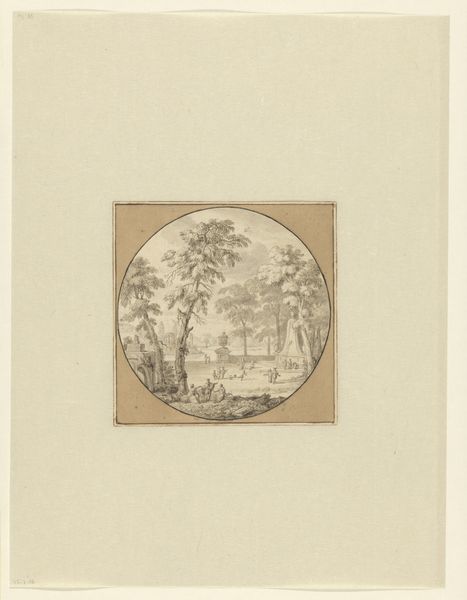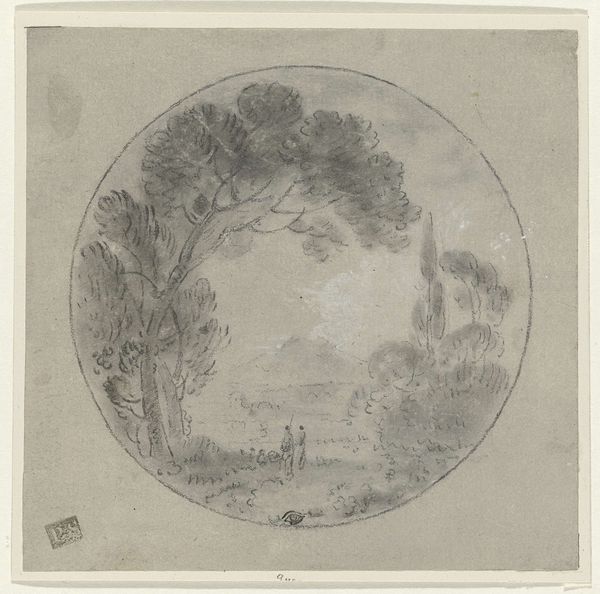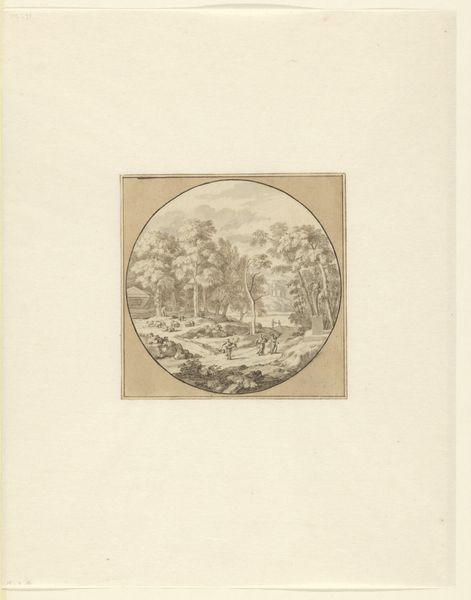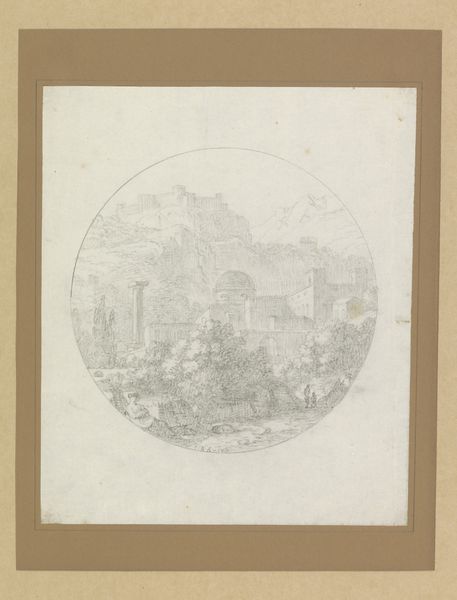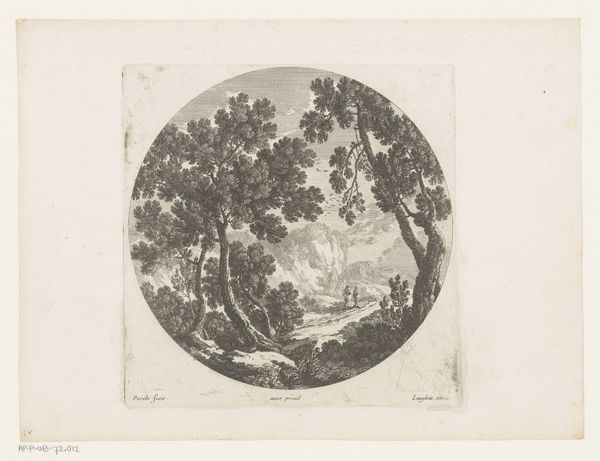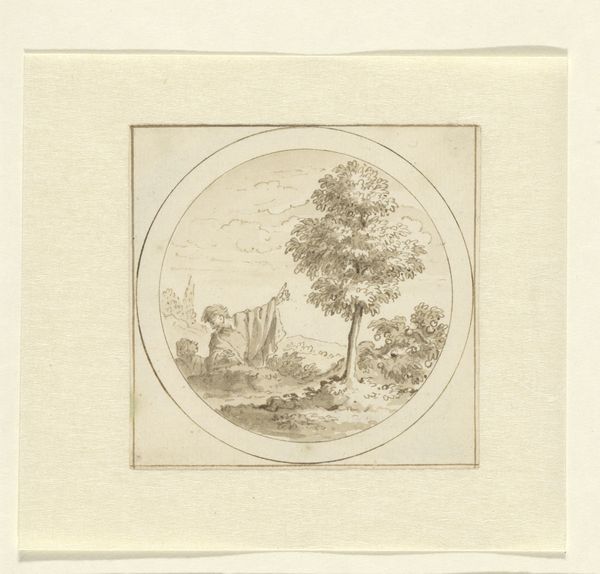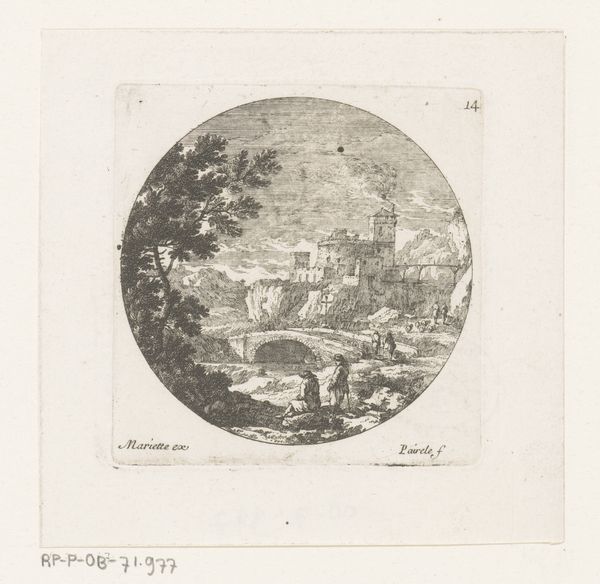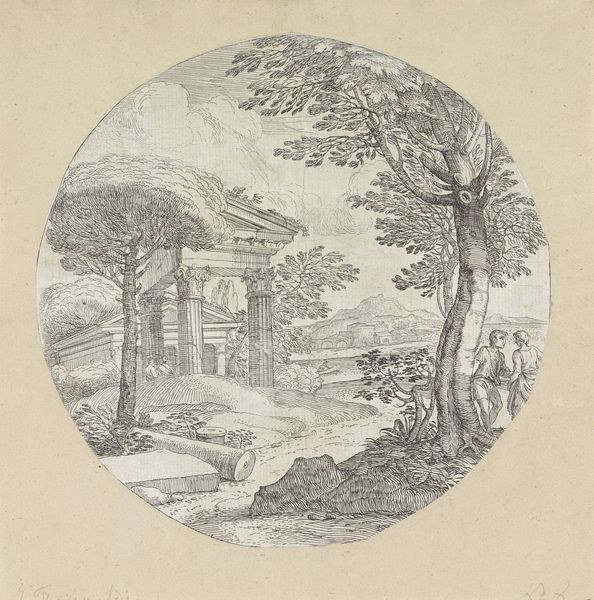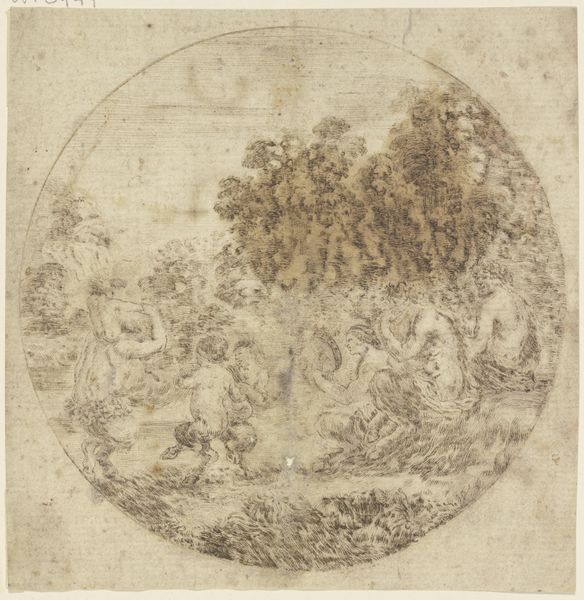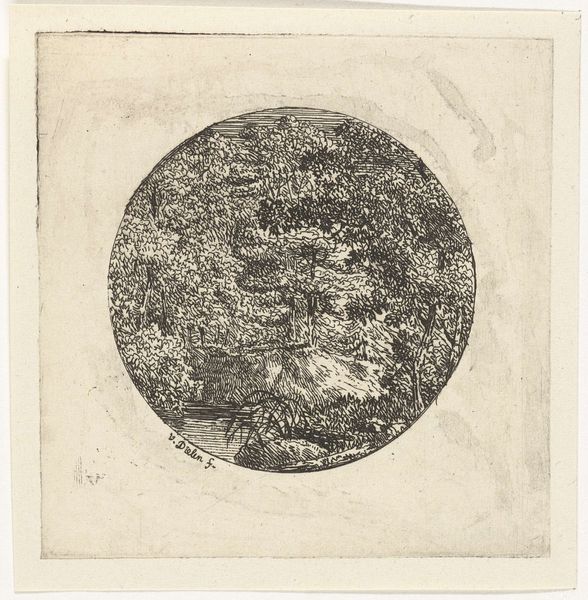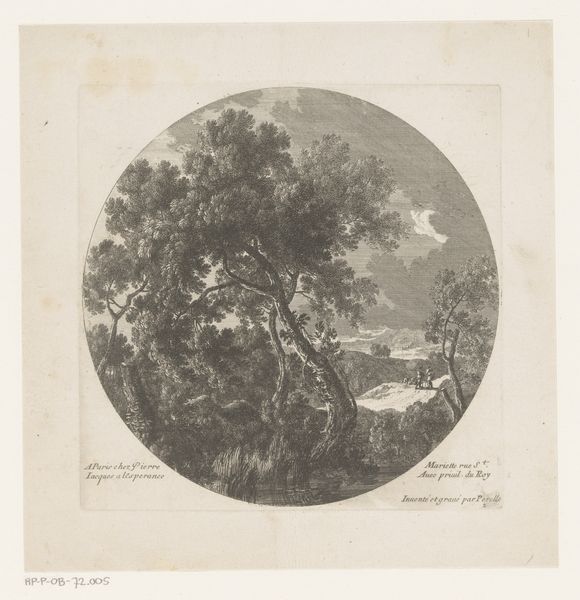
drawing, paper, ink
#
drawing
#
landscape
#
mannerism
#
paper
#
ink
Dimensions: height 474 mm, width 384 mm, diameter 341 mm
Copyright: Rijks Museum: Open Domain
Editor: This is "Rond fantasielandschap," or "Round fantasy landscape," an ink drawing on paper from around the late 16th century. It reminds me a little of a dream, this circular world contained on the page. What social dynamics or narratives do you see present within it? Curator: That's an insightful initial reaction. Looking at it through a historical lens, this work appears during a time of immense social upheaval in Europe, religious wars and the rise of capitalism challenging established hierarchies. Mannerist art often reflects this sense of instability and anxiety. Does the composition, with its ambiguous spatial relationships and somewhat chaotic arrangement of figures and architectural elements, echo that societal turbulence for you? Editor: Definitely. It’s not a calming landscape. The architectural elements especially feel…off. I wonder who it was made for, and how it functioned at the time. Curator: Good question. It's important to consider the role of art in constructing identity and reinforcing power structures. Fantasy landscapes like this, while seemingly escapist, could subtly reinforce class distinctions. For instance, who has the leisure to imagine such fantastical realms? Or, consider the way the artist perhaps draws from, or intentionally departs from, established artistic traditions to assert a specific social or artistic position. What is your reading on this issue? Editor: It feels a little satirical to me, maybe even critical of the powerful. Though I can also see the opposite, the beautiful mastery that almost shows off a patron's collection. Curator: Precisely, and recognizing that complexity, that potential for multiple readings embedded within the image, is essential. Understanding this artwork necessitates acknowledging its historical contingency, its potential to both reflect and shape the social and political landscape of its time. Editor: I appreciate seeing this less as an idyllic fantasy and more as a reflection on the era it was produced in, its subtle commentary. Curator: Absolutely. Hopefully, our conversation will enable viewers to appreciate not only the aesthetic qualities of the piece, but also its role in wider socio-historical power dynamics.
Comments
No comments
Be the first to comment and join the conversation on the ultimate creative platform.
